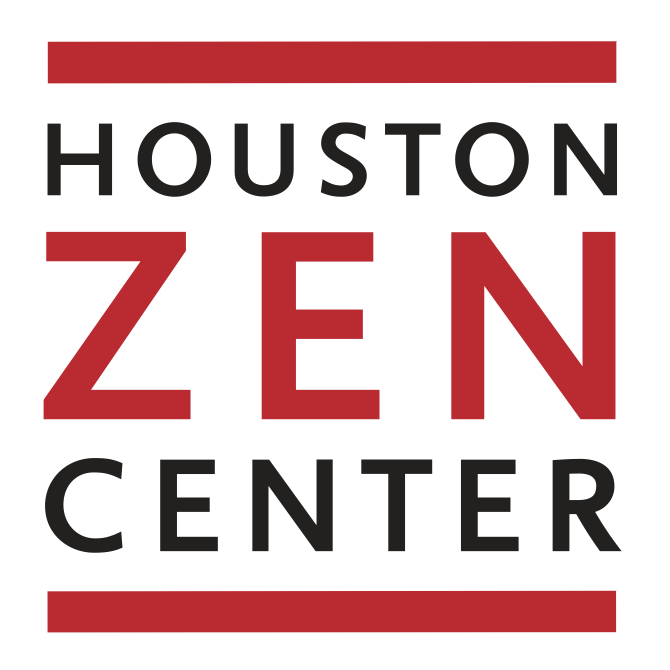ZEN IN THE WEST
Soto Zen, as practiced at Houston Zen Center, has its roots in India, China and Japan. Zen teachers from Japan started coming to the States at the end of the 1800’s, and continued to visit during the early 1900’s, eventually establishing Centers, temples and monasteries.
Shunryu Suzuki Roshi
A Zen priest by the name of Shunryu Suzuki Roshi came to San Francisco in 1959 to lead the Japanese Zen congregation there. As more people practiced with him, he and the group established the first Zen monastery, Tassajara, as well as San Francisco Zen Center. Our Abbot trained at Tassajara for many years. It is known as Tassajara Zen Mountain Center, and is now the oldest and largest Zen monastery in the West. More on Suzuki Roshi, including access to recordings of his dharma talks, can be found here.
Houston Zen Center
The Houston Zen Center was founded in 2003. The Houston Zen Community began in about 1988, when a meditation group, led by Unitarian minister Bob Schaibley, started in First Unitarian Church in Houston. Later the Houston Zen Community evolved into a Soto Zen group and, in 2003 opened its own Center in the Houston Heights neighborhood.
Tenshin Reb Anderson Roshi, Senior Dharma Teacher of San Francisco Zen Center, began to lead retreats for the Houston Zen Community in 1995.
The Abbot, Setsuan Gaelyn Godwin, began to lead us in 1999 and moved to Houston in 2003. We established our Center in the Heights in the same year. HZC eventually outgrew its first building and, in 2007, moved three blocks north to its current location in a large 1918 Craftsman–style building. The grounds now include two meditation halls, the hojo, or Abbot’s residence, an organic garden, monk’s residences and classrooms.
Buddhist meditation and its evolution
In the first century CE a great flowering known as the Mahayana, or “Great Vehicle,” occurred. The Mahayana elaborated on the earlier tradition, emphasizing the role of the bodhisattva, the being who practices with and for all others. Soto Zen is one of the many branches of the Mahayana.
Over many centuries, various practitioners brought Buddhist teachings and practices to China where they spread throughout the country. (See recommended readings for detailed accounts of this rich and dynamic time in Buddhist history ‐ a time with striking parallels to the present, as Buddhist teachings and Western culture come into contact with each other.)
Simply put, the Buddhist teachings in India were highly developed explorations of the human mind. After centuries of profound study, Indian Buddhists were sophisticated students of psychology and liberation.
Once Buddhist teachers arrived in China, the teachings began to adapt in the new environment, influencing and being influenced by Taoism and Confucianism to the lasting benefit of all three.
It was in China that the first Zen monasteries arose. Countless influential Zen Masters flourished in China for more than a thousand years before Zen was transmitted to Japan, Korea, and Vietnam. One of the great Zen Masters, Tozan Ryokai (807–869 CE), is considered to be the co–founder of Soto Zen. (One explanation is that the “to” in “Soto” comes from the first syllable of Tozan’s name; the “So” comes from the first syllable of one of his disciples, Sozan Honjaku, 840–901 CE.)
It was also in China that the famous koan literature, the records of concise, powerful encounters between students and teachers, first developed. Koans continue to be read and studied in all schools of contemporary Zen, although with different emphases in different lineages.
Dogen Zenji is considered the founder of the Soto school in Japan. Born in 1200 CE and ordained at an early age, he traveled to China in 1227 and immersed himself in Zen. In 1230 he returned to Japan where he would teach for the rest of his life. Eihei–ji, one of the two head temples of Soto Zen in Japan, was founded by Dogen Zenji in 1244. Dogen’s voluminous writings, including his most important work theShobogenzo (Treasury of the True Dharma Eye), continue to be studied closely by Zen students.
Zen has flourished in Japan to this day. In the 20th Century, important Zen Masters began to visit the United States. The first important visit actually took place in 1893 when the Japanese priest Soyen Shaku was invited to address the World’s Parliament of Religions in Chicago. He was deeply impressed with the sincerity of the Americans in attendance and recommended that more Soto teachers visit the West.
Shunryu Suzuki Roshi came to America in 1959 to lead Sokoji in San Francisco, one of the official Zen temples in the United States. At that time, Alan Watts was living nearby and began to visit Suzuki Roshi. Alan Watts’ influential radio program allowed many people to hear about Suzuki Roshi and Westerners came to the temple in increasing numbers. Eventually the Westerners were encouraged to set up a separate building devoted to meditation. Thus the San Francisco Zen Center was established in 1969.


